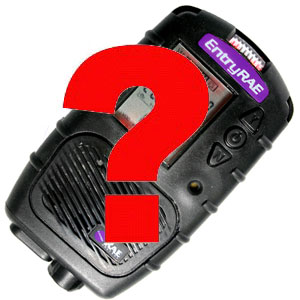By Hans Umhoefer, Sr. Industrial Hygiene Specialist, Total Safety
 How many times has your GPS given questionable directions? Do you continue to follow it when the “road” has deteriorated into boulders and fallen trees? Like a GPS, a direct reading instrument provides information that must be interpreted.
How many times has your GPS given questionable directions? Do you continue to follow it when the “road” has deteriorated into boulders and fallen trees? Like a GPS, a direct reading instrument provides information that must be interpreted.
Direct reading instrumentation has earned itself a place in any safety professional’s bag of tricks. They are robust, fairly precise, and they give a result quickly. The real time, single number display makes them extremely useful, but it can be misleading. We can’t simply accept the numbers on the display. We must ask, “What do those numbers really mean?”
When a CO sensor is calibrated, you can be reasonably assured that, in the presence of 50 ppm of CO, the instrument will read approximately 50 ppm. But what if CO doesn’t make any sense? All of these sensors have cross-sensitivities. Acetylene and hydrogen will produce a response on a CO sensor at relatively low concentrations (RAE Systems TN-121). A leaking acetylene cylinder or battery charging operations could be producing CO reading.
Combustible gas (LEL) sensors and photo-ionization detectors (PID) are designed to respond to a wide range of compounds. However, the sensors do not respond the same to each of these compounds. When these instruments are calibrated with a certain gas, they read in units of that gas. The best way to correct for this is to calibrate with the chemical you will be measuring. However, maintaining this stock of calibration gases would be a nightmare. Fortunately, manufacturers publish correction factors for their instrumentation that allow us to calibrate with standard gasses and then calculate the concentration of the analyte.
When an LEL sensor, calibrated with methane, is used to measure the concentration of o-xylene, the reading must be multiplied by a correction factor of 3.0 (RAE Systems TN-156). In this situation, a reading of 40% LEL methane corresponds to a concentration of 120% LEL o-xylene!
Correction factors greater than one mean the instrument will underestimate the actual concentration, while those less than one result in an overestimation. Most correction factors for a combustible gas sensor are greater than one. Thus, it is possible to exceed the LEL while the instrument reads less than 100%. This is part of the reason for setting the low alarm at 10% LEL. The process for a PID is similar.
Additionally, direct reading does not mean instantaneous reading. Sensor response time can vary from 10 seconds for a PID to 200 seconds for a HCN sensor. These times are magnified if the instrument must pull the sample through a length of tubing. It is important to wait until the reading stabilizes before moving to a new position and collecting another sample. Alarm settings must be low enough to provide sufficient warning of an increasing gas concentration.
It is important to understand how the instrument reports data. Check the datalogging interval and measurement type in the datalog setup to be sure they are appropriate for your purposes. Direct reading instruments typically record average or peak concentrations for each datalogging interval. An average measurement is necessary when calculating STEL or TWA concentrations but may not show high peaks if the concentration fluctuates rapidly. A shorter datalogging period will increase the resolution but also take up more memory.
I’ve referenced RAE equipment for this discussion, but it is applicable to other manufacturers’ equipment as well. Consult the documentation for your instrument so you can interpret what it is telling you.
For additional gas monitoring and detection tips, call us at 888.44.TOTAL.
Total Safety – The Best Minds in the Business!








